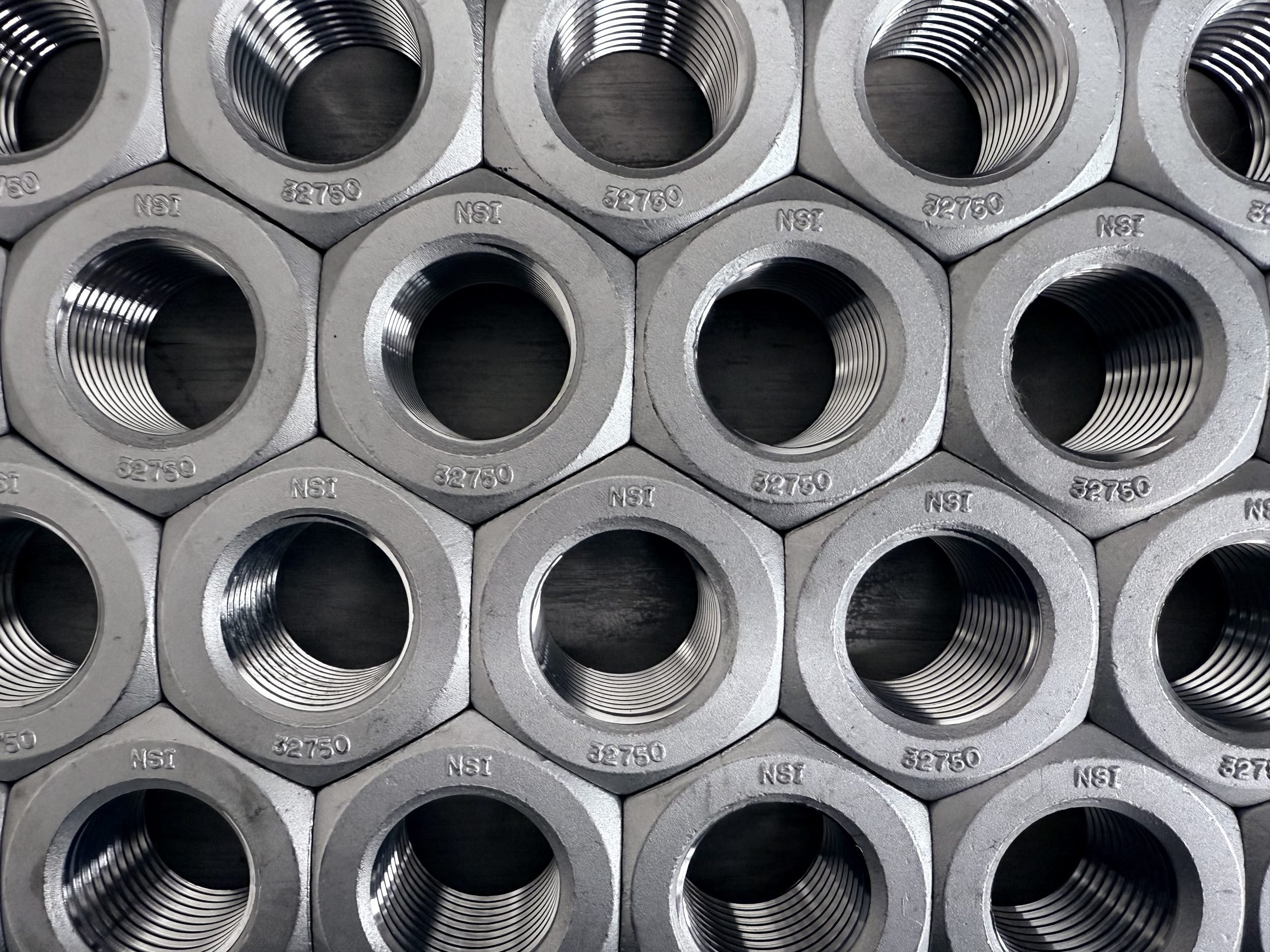Specifications
- W. Nr./EN: 1.4886, 10095
- AMS: 5592, 5716
- ASME: SB-536, SB-511, SB-535, SB-710
- ASTM: B 536, B 511, B 512, B 535, B 546, B 710, B 739

330 Stainless Steel is a heat and corrosion-resistant alloy designed for high-temperature applications. With a unique composition of iron, nickel (34-37%), and chromium (17-20%), this alloy offers exceptional oxidation resistance up to 2100°F (1149°C). Its superior strength and carburization resistance make it ideal for demanding environments such as heat treatment equipment, industrial furnaces, and petrochemical applications. Unlike standard stainless steels, 330 maintains its structural integrity under extreme thermal cycling, preventing scaling and deformation. It also exhibits excellent resistance to stress corrosion cracking in high-temperature settings (Check out our 316 vs 330 stainless comparison.
If you’re looking for a durable, high-performance alloy for your next project, Nickel Systems Inc. is your trusted supplier. Get more information below or request a quote today.
Specifications & Technical Data
If your question isn’t answered below, download the technical data sheet here.
This technical data is specifically related to RA330® Stainless Steel produced by Rolled Alloys. For more information, visit the Rolled Alloys website. If you require this specific material for your project, you must request it at time of quotation.
Density: 0.287 lb/in3 Melting Range: 2450 – 2540°F
| Temperature, ° F | 70 | 1400 | 1600 | 1800 |
|---|---|---|---|---|
| Coefficient* of Thermal Expansion, in/in°F x 10-6 |
– | 9.7 | 9.8 | 10 |
| Thermal Conductivity Btu • ft/ft2 • hr • °F |
7.2 | 13.7 | 14.2 | 14.7 |
| Electrical Conductivity, 68°F (20°C), %IACS |
28.5 | 21 | 19.5 | 18 |
*70°F to indicated temperature.
| Temperature | 70° F |
| Ultimate Tensile Strength | 85.0 ksi |
| 0.2% Yield Strength | 39.0 ksi |
| Elongation | 47% |
| Reduction of Area | 65% |
| Hardness |
Rockwell B 70-85
|
| ASTM Grain Size | 4-7 |
| Erichsen Cup Depth |
0.025 in sheet 0.3937 in
|
| Poisson’s Ratio | 0.297 |
| Temperature, ° F | Ultimate Tensile Strength, ksi | 0.2% Yield Strength, ksi | Elongation, % |
|---|---|---|---|
| 1000 | 71 | 25 | 46 |
| 1100 | 66.4 | 24.2 | 46 |
| 1200 | 56.7 | 22 | 43 |
| 1300 | 44.3 | 21 | 69 |
| 1400 | 35.9 | 20.7 | 78 |
| 1500 | 26.8 | 17.3 | 56 |
| 1600 | 21.1 | 15.4 | 79 |
| 1800 | 10.4 | 8.5 | 79 |
| 2000 | 3.2 | 2 | 28 |
| Temperature, ° F | 1400 | 1600 | 1800 | 2000 |
|---|---|---|---|---|
| Minimum Creep 0.0001%/Hour, ksi | 3.6 | 2.1 | 0.5 | – |
| 10,000 Hour Rupture Strength, ksi | 4.3 | 1.7 | 0.63 | 0.28 |
330 stainless steel is a high-temperature, oxidation-resistant austenitic stainless steel known for its excellent resistance to heat, carburization, and thermal shock. It’s primary elements are Nickel, Chromium, & Iron. Some trademarked alloys can contain up to 1% of copper. This adds to its corrosive resistance. It is commonly used in extreme temperature applications, such as industrial furnaces, heat exchangers, and petrochemical processing.
330 Stainless Steel has a higher nickel content than 316 or other stainless steels. This gives it superior high-temperature strength.
| Temperature (F°) | Tensile Strength (ksi) | 0.2% Yield Strength (ksi) | ||
| 316 Stainless | 330 Stainless | 316 Stainless | 330 Stainless | |
| 70 | 82.4 | 85.0 | 42.2 | 39.0 |
| 200 | 72.6 | 79.2 | – | 35.6 |
| 400 | 71.1 | 75.3 | – | 31.6 |
| 600 | 71.1 | 74.4 | – | 29.6 |
| 800 | 71.1 | 26.5 | – | |
| 1000 | 68.4 | 71.0 | 23.4 | 25.0 |
| 1200 | 50.7 | 56.7 | 22.6 | 22.0 |
| 1400 | 30.7 | 35.9 | – | 20.7 |
| 1600 | not recommended | 21.1 | not recommended | 15.4 |
| 1800 | not recommended | 10.4 | not recommended | 8.5 |
| 2000 | not recommended | 3.2 | not recommended | 2.0 |
Note: Short Time Elevated Temperature Tensile Properties. This table is believed to be reliable. However, it is not intended to be a substitute for professional engineering assistance which is a requisite to any specific application.
Nickel Systems Inc. is able to supply all your 330 Stainless Steel fasteners for your next project. Choose a product below or begin your quote today by clicking on this link.
